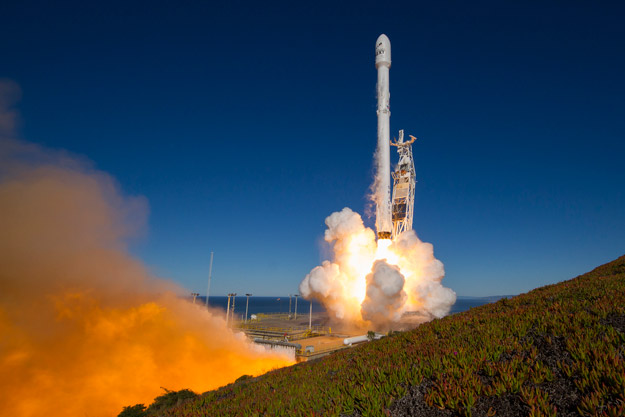SpaceX Falcon 9 Delivers Iridium Satellite Payload To Orbit, Sticks Drone Ship Landing
However, the space gods were definitely with SpaceX yesterday, as the Falcon 9 successfully put 10 Iridium satellites into low-Earth orbit (LEO). This was the first of a seven-launch contract that SpaceX has with Iridium to deploy a “constellation” of at least 70 satellites into LEO, forming the Iridium Next network.
Not only did SpaceX complete its primary mission for Iridium, but its secondary goal of successfully recovering the Falcon 9 rocket intact was also achieved. Just minutes after deploying the Iridium satellites, the Falcon 9 fell back to Earth and then made a powered landing on the drone ship "Just Read the Instructions," which was stationed in the Pacific Ocean. This is one of two SpaceX drone ships, with the other being “Of Course I Still Love You”; which is stationed on the East Coast for Atlantic Ocean recoveries.
We must say, SpaceX is starting to make these powered landings seems rather routine, as the company has been able to successfully recover the Falcon 9 boosters on land and on water. SpaceX eventually hopes that it can get to a point where it can quickly refurbish and refuel these boosters to reduce the turnaround time for launches, and also dramatically drop launch costs (since a large portion of the cost surrounding a launch would be reusable).

SpaceX hopes to send one of its previously-used Falcon 9 boosters back into space within the next month or so for the launch of the SES-10 communications satellite. Full reusability — where a Falcon 9 blasts off into space, lands, and is then quickly refueled for a subsequent flight — is still pretty far off in the distance for SpaceX.
Looking forward, SpaceX is planning up to 27 mission for 2017 alone, compared to just eight in 2016. By 2019, SpaceX CEO Elon Musk is envisioning around 50 launches per year.


